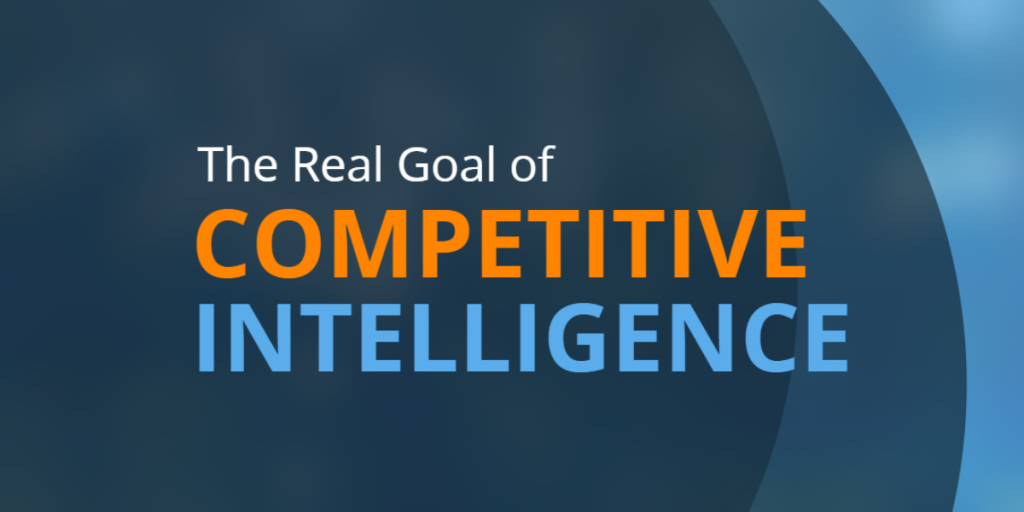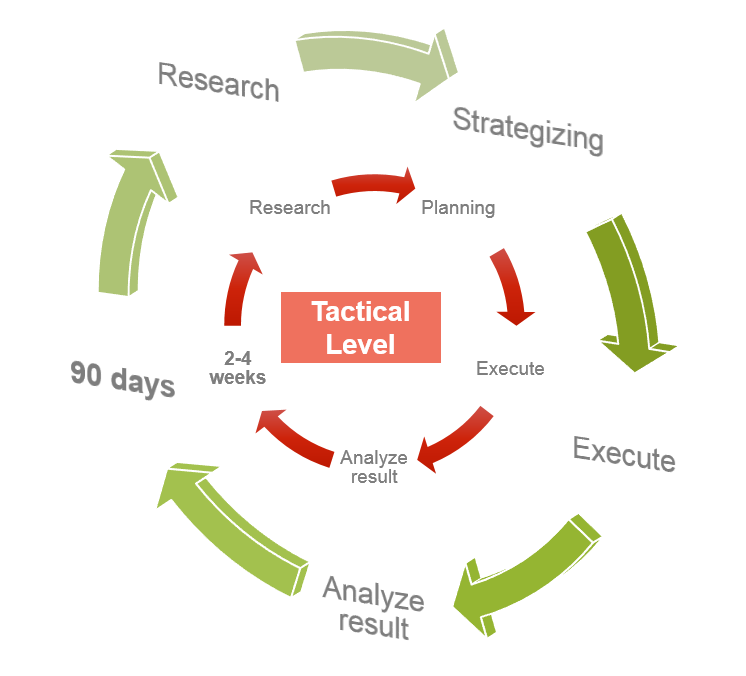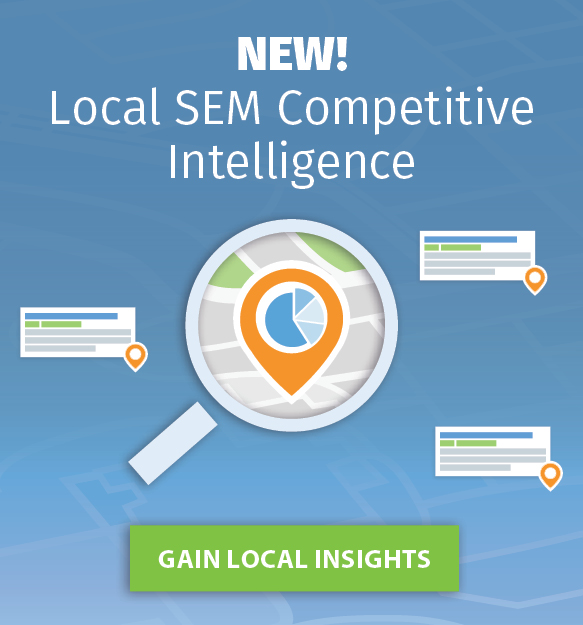
There’s a super common misconception when it comes to competitive intelligence.
We’re not really sure that 99% of people actually get this wrong, but we can confirm, based on our 7 years of experience in the competitive intelligence space, that the percentage is really, really high.
You see, most people make the mistake of thinking that the goal of competitive intelligence is to copy their competitors, which couldn’t be further from the truth.
Competitive intelligence isn’t about copying your competitors, but it is about learning from them.
The problem with copying your competitors is that you won’t stand out and you’ll always be one or two steps behind.
Which is why it’s so important to keep in mind that competitive intelligence isn’t about watching your competitors and copying their every move.
So what is competitive intelligence all about?
The Real Goal of Competitive Intelligence
The real goal of competitive intelligence is to make sure you stand out from the competition, and in order to do so, you need to always know what they’re up to.
Let’s take a local air conditioning service company as an example.
When you search for “ac repair” in iSpionage, you find 85 competitors and 209 ads. The total number of competitors is probably higher than this, but we have better data for national campaigns which means some local campaigns fly under our radar.
Here’s what the data looks like:

So what should we do next?
The next step is to click on the ads tab to see what ad copy different businesses are using.
The first thing you’ll notice is that “Local AC Repair” and “AC Repair [City Name]” are the most common headlines. Here are two examples:


What this means is that you need to find a way to avoid using the exact same headline that everyone else is using. If you use the standard “AC Repair [City Name]” headline that so many of the other advertisers are using, then you’re not going to stand out which means you’re not going to get that many clicks.
It also means you’re going to blend in instead of communicating what’s special about your business.
Here are some examples of different headline variations you can use to stand out:
- Cheapest AC Repair
- Reliable AC Repair
- Low Cost AC Repair
- Dependable AC Repair
Do you see how those ads stand out and offer something searchers might be interested in besides “AC Repair [City Name]?
Always keep in mind that when you stand out, you increase the chances that your ads are going to get clicked, which in turn increases your CTR and should also lower your CPC.
This applies to every aspect of your business, from the ad copy you use, to the headline you write for your homepage, etc.
The main point here is that copying the competition is not the goal of competitive intelligence.
Instead, the goal is to help you stay as informed as possible about what your competitors are doing so you can make smarter strategic decisions and so you can create offers that are compelling, stand out, and generate sales.
Which leads us to our next point, i.e. the second biggest misconception people make when it comes to competitive intelligence.
The #2 Biggest Misconception about Competitive Intelligence
The next big mistake people make when it comes to competitive intelligence is to think that it’s only relevant at the tactical level. Most people think that you use competitive intelligence to write better ad copy or find more keywords and that’s it, but that’s simply not true.
Instead, competitive intelligence should start at the strategic level and then trickle down to the tactical level.
Let me explain.
If you start at the tactical/execution level, it’s difficult to come up with points of differentiation.
Consider the previous ad copy examples we used.
In the previous examples, we learned that most businesses use generic “AC Repair [City Name]” types of headlines, and that you should do something to stand out if you want to generate more clicks.
But how can you stand out if you haven’t already defined your company’s unique position in the marketplace?
Let’s say your ad manager wants to use a headline like “Cheapest AC Repair” but you haven’t yet defined if being cheap is one of your strategic advantages. Or maybe you offer a premium priced service which means your ad manger definitely shouldn’t mention “cheapest AC repair” in your ad copy.
That’s why you need to use competitive intelligence at the strategic level before applying it at the tactical level.
First, you need compare your company against the competition and then sit down to figure out what your unique value proposition is. Are you the lowest-priced option in the market? If so, then that’s something you can use in your ads, but if not, then you’ll need to find another way to stand out.
Maybe your value proposition is that you offer the highest level of service and the best guarantee in the industry. If that’s the case, then you should use this type of ad copy for your campaigns.
You might write a headline like “Guaranteed AC Repair” which stands out from competitors and gives people a reason to choose your service over the competition.
The point here is that you need to define your position in the marketplace first at a strategic level so that it can be applied properly at the tactical level. This includes your product roadmap, your company’s unique selling proposition, etc., and then trickles down to the tactical level which includes keywords, ad copy, and landing pages.
But the problem is that most people use competitive intelligence the wrong way. They use it to find keywords and write ad copy, but they don’t use it to inform their strategic, board-room level decisions, which is a mistake.
In order to avoid making this mistake, you need to leverage competitive intelligence at the strategic level first.
You need to catalogue what offers your competitors are running, what their unique selling proposition is, and how they’re running their ads, in order to make smarter decisions at a strategic level.
Then, once you’ve made those decisions, the benefit will trickle down the entire marketing chain until it reaches your search marketing team where you’ll get even more leverage from the decisions you made at the board-room level.
Here at iSpionage, we teach people to use competitive intelligence at the board-room level to help make smarter strategic decisions every 90 days while also using competitive intelligence at the tactical level to increase wins every two to four weeks, as illustrated in the chart below.

The inner circle explains how competitive intelligence can be used for quick wins every two to four weeks, and the outer circle shows how competitive intelligence should be used every 90 days to make smarter strategic decisions that will impact the number of tactical wins you get over the next quarter.
Here’s a quick summary of what we’ve learned so far:
- Competitive intelligence isn’t about copying your competitors. Instead, it’s about learning as much as you can about the competition, and then figuring out how to stand out, not to mimic what they’re doing.
- Competitive insights are the most useful when implemented first at the strategic level so what you learn can trickle down to all of your marketing channels. If you only use competitive intelligence at the tactical level, you’ll miss out on the high-level positioning and offer crafting needed to stand out and win more business.
Hopefully, you’ve learned something new from this installment of our guide to applying competitive and market intelligence for actionable insights. Be sure to subscribe below in order to get our next installment in this series.







